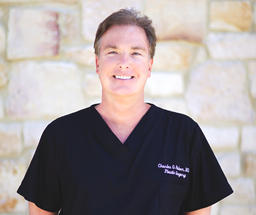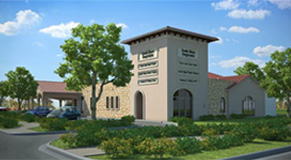Facelift
Facial Rejuvenation
A Facelift is a very popular procedure as is Facial Rejuvenation which can take from the non-surgical family of procedures to rejuvenate the face. These facial rejuvenating procedures are common in places like Houston, Tx because of the exposure to intense sunlight.
Some of us show our age disproportionately on our face and neck. As we age, the muscles relax or permanently tense up, and this creates wrinkles and loose skin. Some patients elect to rejuvenate their faces using temporary techniques, such as liquid filler, Botox to decrease wrinkles, and chemical peels to help smooth out sun damaged skin. Other Houston Area patients seek a more permanent solution. For these patients, a facelift is the primary procedure for achieving a tighter, smoother, more youthful appearance that will have a long term impact. Dr. Polsen’s facelift patients remark that they look and feel both rejuvenated and energized, and that they look younger but still look like the same person (a natural looking result).
Your face is how most people identify you. If you look older than you feel, that’s how many people will treat you. If you look as young as you feel, you can also count on people to treat you as though you’re younger than your years.
Contact Houston Facelift Surgeon Dr. Charles Polsen
The first step in achieving a more radiant, youthful looking face is discussing your options with Dr. Polsen, and to do that you’ll need to contact our Clear Lake / South Houston office, either online or by calling (281) 538-6600.
Facial Surgery Overview
- Facelifts achieve a tighter, smoother, more youthful appearance
- Eliminates jowls, sagging skin, and crease lines
- Recovery: Generally around two weeks
Who is a Good Candidate for Facial Rejuvenation?
If you are experiencing the following, and are healthy enough for major surgery, there is a good chance you are a prime candidate for a facelift:
- Too relaxed of a jaw line and/or the appearance of jowls
- Sagging skin, muscles, and fat in the face and neck due to aging or genetics
- Skin that maintains some measure of elasticity
- A large number of lines and wrinkles, compounded by a significant amount of excess skin
- Crease lines along the nose, mouth, and chin which make you appear older than you feel
Good facelift candidates are generally those searching for a permanent solution to lines and wrinkles across the face. This means that if you have subtle wrinkles, for example, you might be better off looking into a Juvederm or Botox injection. Facelift surgery is usually reserved for those who have a significant amount of wrinkles and excess skin. It’s also very important that facelift patients maintain realistic expectations throughout the procedure.
What Happens During Your Facelift Consultation
Your consultation with Dr. Polsen is the perfect time to discuss what you want your facelift to accomplish and what you can expect your results to look like. Good candidates for facelift surgery should be prepared to answer questions about their general health and medical history.
It’s also not uncommon for board certified plastic surgeons in Houston, like Dr. Polsen, to take detailed measurements of your face during your consultation. He may take pictures or use 3D scanning software to help you visualize your final results. Dr. Polsen will also likely discuss which facelift techniques might be appropriate for you as well as the best way to achieve your desired results.

The Rhytidectomy Procedure
You will discuss your desired end result with Dr. Polsen, and he will determine which areas of your face need more support and which areas of excess tissue need to be eliminated. Facelifts are performed under general anesthesia, although in some less invasive instances local anesthetic may be used instead.
Incisions are designed to be hidden by the natural terrain of your face: the nooks and crannies around the brow, chin, and ears, and sometimes even hidden by the hair. It’s not uncommon for facelift incisions to be made an inch or two above the hairline, for example. Generally, other incisions are made next to the ear, and a very small incision is made under the chin to excise fatty and excess tissue around the jawline. The idea is to get as much pull on the skin as possible, but to have that pull be in natural-looking directions. This helps your results look more natural and youthful upon completion of the procedure.
Restructuring of your facial framework is then performed by attaching deep tissue to the temporal and mastoid fascia using non-dissolving suture. Dr. Polsen will essentially re-drape the facial and neck skin in order to produce tighter tissue in the final result. Fat may be removed or sculpted during this time. Dr. Polsen will inform his Houston area facelift patients if he believes that liposuction should also be involved in your facial rejuvenation procedure. Depending on the complexity of your facelift, general anesthesia may be used during surgery.
Facelift surgery is usually performed as an outpatient procedure, meaning patients can usually return home for the duration of their recuperation shortly after the completion of surgery.
Facial Rejuvenation / Facelift Education
Finding the Right Incision Type
Facelift patients have an uncommon variety of incision types to select from when it comes to their procedures. In your discussions with Dr. Polsen, you will determine which set of incisions will address your particular areas of concern. There are two basic facelift “types:”
- Traditional Facelift: A traditional facelift incision is made from the temple down along the side of the face (behind the hair when possible) and around the ear. This affords the surgeon the most flexibility in terms of eliminating excess skin and reshaping the tissues of the face to look more youthful. Traditional facelift procedures are usually used when wrinkles, lines, and excess skin are fairly widespread throughout the face.
- Limited Incision Facelift: In cases where wrinkles and lines are more discreet and confined to certain areas, patients and surgeons may opt for a type of facelift that relies on a limited incision technique. This limited incision facelift will generally be made between the ear (next to the ear lobe) and the back of the ear. This still allows surgeons the ability to transform the face—but in a much more targeted way. The advantage of the limited incision is that recovery is usually more comfortable and more rapid.
During your consultation with Dr. Polsen, you’ll discuss which facelift techniques are most appropriate for achieving your desired results.
Recovery From a Facelift
Any post-operative pain experienced should subside after a day or two. Post-operative pain can be managed with prescription medication if necessary. Any normal bruising and swelling will improve gradually as your final results begin to show. Your most visible signs of surgery will fade within the first two weeks. This is typically when Dr. Polsen’s patients begin returning to feeling “normal.”
Your recovery will be unique to you, your body, and your procedure. However, most patients can expect to generally follow a facelift recovery timeline that looks something like this:
- First Week: During the first week of recovery, you will notice bruising and swelling around the incision points of the face. This swelling and bruising should begin to subside 3-4 days after surgery. In most cases, facial rejuvenation patients in Houston will want to remain restful during this week, though you may feel good enough to get up and walk around after the second day of recovery.
- Second Week: During the second week, patients will generally feel more comfortable and more energetic. That said, patients should still be in a restful mode during this second week, refraining from engaging in any heavy lifting or high energy activity. Bruising and swelling may still be visible, and sutures or stitches may be removed during this period as well.
- End of First Month: It’s not uncommon for some patients to have swelling throughout the first month of recovery. However, most patients can feel comfortable returning to work by this point in the recovery cycle (after the second week for most). After the first month, patients can begin to engage in most normal activities again (but pay special attention to sun safety) and the incision sites should begin to improve. After the first month, any scarring should begin to recede and you’ll be able to enjoy your facelift results.
Dr. Polsen will work with you to develop a personalized recovery plan—one that you can follow, because it will be designed to minimize your discomfort while maximizing the longevity of your results. In fact, due to the surgical nature of a facelift, it is only once your recovery is over that you will see your complete results. A prolonged recovery means putting those results in jeopardy, so it’s essential that you follow Dr. Polsen’s instructions.
To learn more about what a facelift can do for you–to see if you can get rid of the excess skin, lines and wrinkles that have been bothering you–contact South Shore Plastic Surgery to schedule a confidential consultation with Dr. Polsen in his South Houston, TX office and start your transformation.

